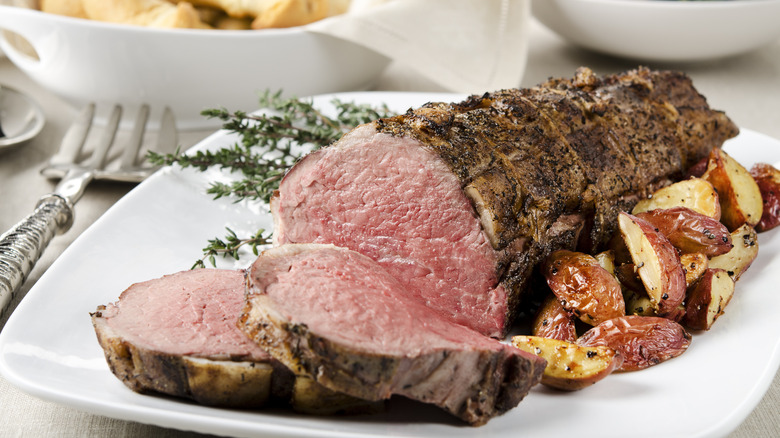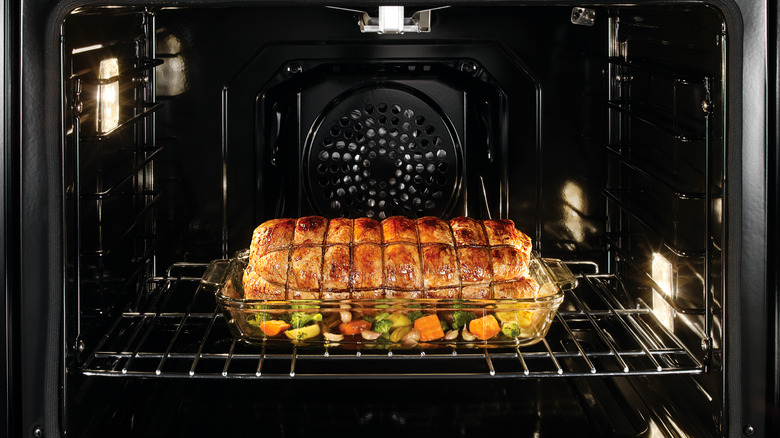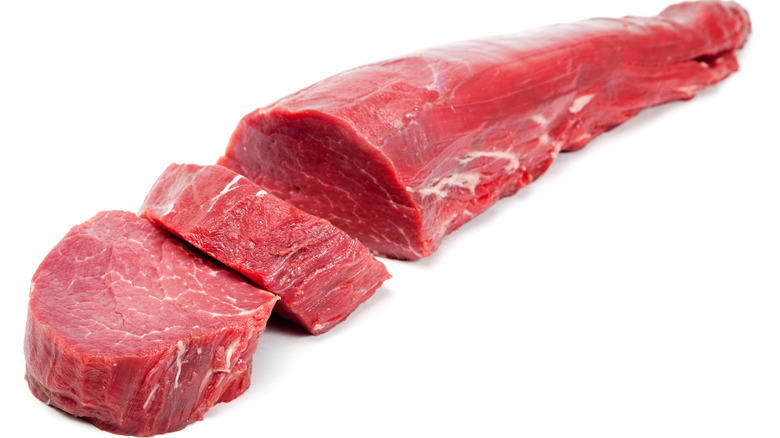How The Temperature Of Your Meat Impacts Roasting
Roasts are the perfect entrée for a crowd. A plump, juicy hunk of meat can fill a lot of stomachs, plus, it's a showpiece of sorts. When guests see you pull a roasted beef tenderloin out of the oven, they see a representation of the time and dedication you put in for them. But do you know what the best part is? Roasting is actually one of the easiest ways to cook meat, so the grand presentation makes a big impression without putting you under too much stress.
Most of the time required for roasting is inactive — simply waiting for the oven to do its work. This leaves you plenty of time to make side dishes and greet guests. That said, there are a few steps you absolutely cannot skip before popping that roast in the oven, and the most important of those is searing. By browning the outside of the meat before roasting it (or, alternatively, using the reverse sear method), you create a flavorful layer of caramelization. The trick here is not to let the exterior of the roast overcook before the inside comes to temperature and to protect yourself from that mistake, you need to consider the temperature of your meat before cooking.
It's all about even cooking
When it comes to meats, and pretty much every food for that matter, everyone talks about cooking temperatures, but few people focus on the pre-cooking temperature, which is just as important. If you want your roast to cook evenly all the way through, then the whole piece of meat must be at an equal temperature at the time you put it in the oven. If you pull a piece of meat out of the refrigerator and immediately put it in the oven, the interior will take a much longer time to come to temperature than the exterior. You'll either end up with a perfectly browned roast that's raw in the center or a perfectly pink center surrounded by a ring of gray and a tragically burnt crust.
Before you roast your meat, you need to bring the whole thing up to room temperature. Take it out of the refrigerator, remove the packaging, and place it on a clean surface, like a cutting board or the roasting rack itself. Then, let it rest there until it's time to cook. Depending on the size of the piece of meat you're working with, it could take between 30 minutes and one hour for it to come to room temperature.
There's a limit to how long meat can stay at room temperature
Obviously, there's a reason we keep meat in the refrigerator: bacteria. If harmful invaders like salmonella and E. coli get into your roast, an even cook will be the least of your problems. There is a specific temperature range at which these bacteria can thrive. The USDA calls it the "danger zone," and it falls between 40 and 140 degrees Fahrenheit. That's why refrigerators need to be kept below 40 degrees and beef should be cooked to 145 degrees Fahrenheit.
To make sure your roast stays safe to eat, you should not leave it out at room temperature for more than two hours. This window is even shorter if you live in a hot climate, however. If the air is 90 degrees or more, the meat cannot sit out for any more than one hour. But, as long as you stay within the recommended time frame, you should be good as gold, and well on your way to the perfect roast.


